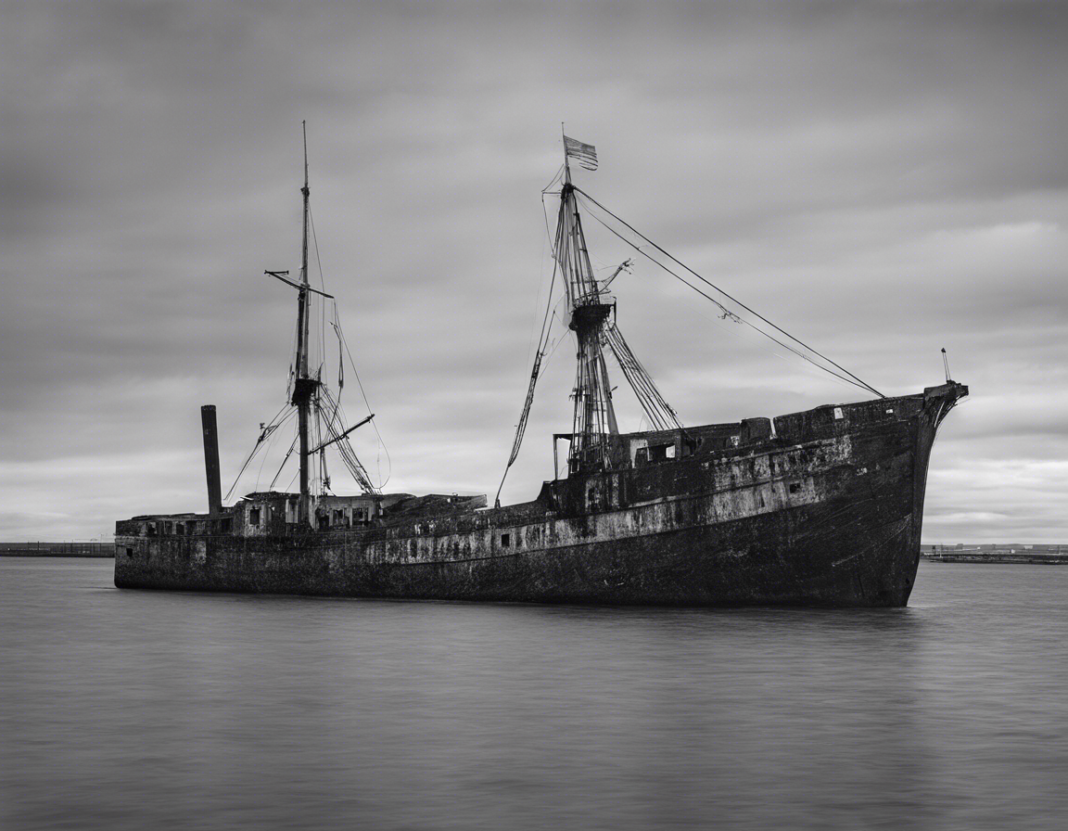Sailing has been a fundamental part of human civilization for thousands of years, enabling exploration, trade, and cultural exchange across the globe. With its roots dating back to ancient times, sailing has evolved from simply a means of transportation to a popular leisure activity enjoyed by many today. The allure of the open sea, the sound of the wind in the sails, and the sense of freedom that comes with navigating the vast expanse of the ocean have captivated sailors for generations. In this article, we will delve into the world of sailing on the Seven Seas, exploring its history, techniques, equipment, and the thrill of embarking on a sailing adventure.
History of Sailing
Sailing can be traced back to ancient civilizations such as the Egyptians, Phoenicians, Greeks, and Romans, who used sailboats for trade, exploration, and warfare. The invention of the sail revolutionized maritime travel, allowing sailors to harness the power of the wind to propel their vessels across the ocean. Sailing played a crucial role in connecting distant lands and cultures, facilitating the exchange of goods, ideas, and technologies.
During the Age of Exploration in the 15th and 16th centuries, European sailors set out to discover new trade routes and lands, leading to the colonization of the Americas, Africa, and Asia. The development of advanced sailing techniques and navigation tools, such as the compass and sextant, enabled sailors to venture into uncharted waters with confidence. Famous explorers such as Christopher Columbus, Vasco da Gama, and Ferdinand Magellan undertook daring voyages that expanded the known world and reshaped global history.
In the modern era, sailing has evolved into a popular sport and recreational activity enjoyed by people of all ages. Regattas, yacht races, and cruising adventures attract sailing enthusiasts from around the world, showcasing the beauty and thrill of navigating the seas under sail.
Types of Sailboats
Sailboats come in various shapes and sizes, each designed for specific purposes and sailing conditions. From the nimble dinghies to the majestic tall ships, there is a wide range of sailboat types to choose from. Some popular types of sailboats include:
1. Dinghies
Dinghies are small, open sailboats often used for training, racing, and recreational sailing in protected waters. They are typically easy to sail and maneuver, making them ideal for beginners and experienced sailors alike.
2. Sloops
Sloops are the most common type of sailboat, featuring a single mast with a mainsail and a headsail. They are versatile and easy to handle, suitable for day sailing, cruising, and even bluewater passages.
3. Catamarans
Catamarans have two hulls connected by a deck, offering stability, speed, and ample living space. They are popular for cruising in shallow waters and are favored by families and charter companies.
4. Ketches and Yawls
Ketches and yawls have two masts, with the aft (rear) mast shorter than the main mast. They provide versatility in sail handling and are often used for long-distance cruising and offshore sailing.
5. Tall Ships
Tall ships are large, traditionally rigged sailing vessels that harken back to the golden age of sailing. They are popular for sail training programs, historical reenactments, and adventure cruises.
Essential Sailing Equipment
1. Sails
Sails are the primary source of propulsion for sailboats, capturing the wind’s energy to move the vessel forward. Common types of sails include the mainsail, headsail, spinnaker, and genoa, each designed for specific wind angles and sailing conditions.
2. Rigging
Rigging refers to the system of ropes, wires, and hardware that support and control the sails on a sailboat. Components of the rigging include the mast, boom, shrouds, stays, and halyards, which work together to adjust sail shape and optimize performance.
3. Navigation Tools
Navigation tools such as compasses, GPS units, charts, and sextants are essential for sailors to determine their position, course, and route while at sea. Modern technology has greatly enhanced navigation accuracy and safety, but traditional skills remain valuable for sailing enthusiasts.
4. Safety Gear
Safety gear such as life jackets, harnesses, flares, and first aid kits are crucial for ensuring the well-being of sailors aboard a sailboat. Safety should always be a top priority when embarking on a sailing adventure, especially in challenging conditions or offshore passages.
5. Anchoring System
Anchors, chains, and windlasses are used to secure a sailboat in place when mooring or anchoring. Having a reliable anchoring system is essential for sailing trips that involve overnight stays or stops at remote locations.
Sailing Techniques
1. Tacking and Gybing
Tacking and gybing are essential sailing maneuvers used to change the direction of a sailboat relative to the wind. Tacking involves turning the bow of the boat through the wind, while gybing involves turning the stern of the boat across the wind. Properly executing these maneuvers is key to efficient sailing and avoiding collisions.
2. Trim and Sail Adjustment
Trimming the sails and adjusting their angle to the wind is crucial for optimizing performance and speed. Sailors must constantly monitor wind direction and strength, as well as adjust sail controls such as the mainsheet, jib sheet, and halyards to maintain the ideal sail shape and balance.
3. Heaving To
Heaving to is a sailing technique used to stop or slow down a sailboat in challenging conditions, such as strong winds or rough seas. By adjusting the sails and rudder, sailors can effectively park the boat in a stable position relative to the wind and waves, providing a temporary respite during inclement weather.
4. Man Overboard Drill
The man overboard drill is a critical safety procedure that all sailors should be familiar with. In the event that a crew member falls overboard, sailors must act quickly and decisively to execute a rescue operation, including deploying lifesaving equipment, maneuvering the boat, and recovering the person from the water.
5. Storm Sailing
Storm sailing entails sailing in adverse weather conditions, including strong winds, large waves, and heavy rain. Proper storm tactics such as reefing the sails, heaving to, and maintaining a course relative to the wind are essential for safely navigating through storms and minimizing risk to the boat and crew.
Sailing Destinations
From the turquoise waters of the Caribbean to the rugged coastlines of Scandinavia, the world is full of sailing destinations waiting to be explored. Whether you prefer cruising in calm bays, racing in regattas, or embarking on an offshore voyage, there is a sailing destination to suit every taste and experience level. Some popular sailing destinations include:
1. The Mediterranean Sea
The Mediterranean Sea offers a diverse range of sailing experiences, from the historic ports of Italy and Greece to the sunny beaches of Spain and Croatia. Cruising in the Mediterranean allows sailors to explore ancient ruins, sample local cuisine, and soak up the vibrant culture of the region.
2. The Caribbean
The Caribbean is a paradise for sailing enthusiasts, with its tropical climate, crystal-clear waters, and steady trade winds. Cruising among the islands of the Caribbean offers endless opportunities for snorkeling, diving, beachcombing, and enjoying the laid-back island lifestyle.
3. The South Pacific
The South Pacific is a dream destination for adventurous sailors seeking remote islands, exotic wildlife, and untouched natural beauty. Sailing in the waters of Tahiti, Fiji, and Tonga provides a glimpse into pristine marine environments, traditional Polynesian culture, and breathtaking landscapes.
4. Northern Europe
Northern Europe boasts rugged coastlines, fjords, and archipelagos that are perfect for sailing enthusiasts looking for a mix of adventure and tranquility. Cruising in Norway, Sweden, and Scotland offers spectacular scenery, charming harbor towns, and the chance to experience the midnight sun in summer.
Sailing Tips for Beginners
1. Take a Sailing Course
For beginners, taking a formal sailing course from a certified instructor is the best way to learn the basics of sailing, navigation, and safety. Courses are available at sailing schools, yacht clubs, and sailing academies around the world.
2. Practice Knot-Tying
Mastering essential knots such as the bowline, figure-eight, and cleat hitch is essential for sailing tasks such as securing lines, attaching sails, and docking the boat. Practice knot-tying regularly to build muscle memory and improve sailing skills.
3. Learn Sailing Terminology
Familiarize yourself with sailing terminology such as port, starboard, bow, stern, windward, leeward, and tack. Understanding these terms will help you communicate effectively with your crew and navigate the boat with confidence.
4. Start Small
Begin your sailing journey on small, stable sailboats such as dinghies or keelboats to build confidence and basic sailing skills. Gradually progress to larger boats and more challenging conditions as you gain experience and proficiency.
5. Embrace Sailing Etiquette
Respect other sailors, right of way rules, and environmental conservation practices while on the water. Sailing etiquette promotes safety, courtesy, and sustainability within the sailing community.
Frequently Asked Questions (FAQs)
1. What are the Seven Seas in sailing?
In sailing terminology, the Seven Seas historically referred to the major bodies of water that early sailors navigated, including the Mediterranean Sea, Adriatic Sea, Black Sea, Red Sea, Arabian Sea, Persian Gulf, and Indian Ocean. Today, the phrase “Seven Seas” is often used figuratively to represent all the world’s oceans and seas.
2. How can I prepare for a sailing trip?
To prepare for a sailing trip, ensure your sailboat is in good condition, stock up on provisions, check the weather forecast, plan your route, and inform someone ashore of your itinerary. Pack sailing gear, safety equipment, and navigation tools, and conduct a thorough safety check before setting sail.
3. What is the difference between powerboating and sailing?
Powerboating involves using engines to propel a boat through the water, while sailing relies on harnessing the wind’s energy with sails to move a vessel. Powerboats offer speed and maneuverability, while sailing provides a unique connection to nature, self-reliance, and the traditional art of navigating using wind power.
4. Can anyone learn to sail?
Yes, anyone with a passion for the sea and a willingness to learn can become a competent sailor. Sailing is a skill that can be acquired through formal training, hands-on experience, and continuous practice on the water. Sailing schools, clubs, and mentors can help beginners develop sailing proficiency and confidence.
5. What are some famous sailing races and regattas?
Famous sailing races and regattas include the America’s Cup, the Volvo Ocean Race, the Sydney to Hobart Yacht Race, Cowes Week, and the Fastnet Race. These events attract top sailing teams, cutting-edge sailboats, and avid spectators from around the world, showcasing the excitement and competitiveness of the sailing world.

